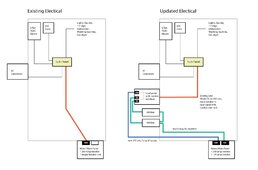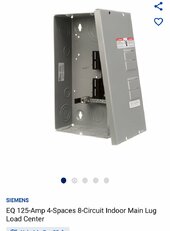@Zapper77 ok, thanks for that info! .1 seems straight-forward.. just feed to this load center and install 2 50 amp breakers that each to go an inverter. But about .2, haha.. so if I hired an electrician to help me wire it up, is there a recommended method? Would I need another of that same 125 amp load centers that the two inverters output to, combine, and then feed that into an MTS? I guess I'm just trying to find the simplest way to wire this up with a grid bypass.. I know that adds an extra level of complexity, but it sounds like it is recommended.




